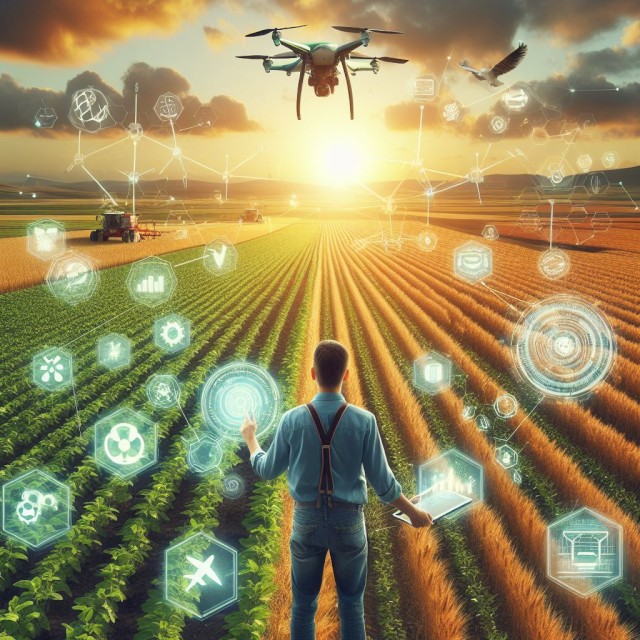Agronomy 4.0
Here you can find out more about the world of Project Solanum, how a worldwide famine came about, how the “hubs” came about and what the everyday working lives of Hiwot, Alberot and Wout are like.
-
The integration of technology and data-driven decision making in agronomy in the 2020s was undoubtedly an important step towards a more modern and efficient agriculture. Through the use of precision agriculture, drones, sensors and remote sensing, agronomists were able to collect comprehensive data about their fields and crops.
The hope was that these technologies would lead to a more sustainable and future-oriented agriculture by reducing the use of fertilizers and pesticides while increasing crop yields. The vision was that the fourth agricultural revolution would help to adapt agriculture to the challenges of climate change and dwindling resources.
However, the reality turned out to be more complex than expected. The drastic changes in the climate, especially the effects of the millennium drought YD, posed ever greater challenges for agriculture. Even the most advanced technology and data-driven decision making could not anticipate the extreme weather conditions and changing environmental conditions
In a desperate search for solutions and to protect their crops, many agronomists turned to the so-called “diversification products” of multinational agribusinesses. These products, such as fertilizers and pesticides optimized for their own seed varieties, promised better adaptability and higher crop yields. However, dependence on these expensive and often patented products led many agronomists to ruin. The high costs and long-term contracts with multinational corporations such as “Faber Unlimited” put a strain on their financial situation and independence.
Project Solanum claims that conventional agriculture is threatened with extinction in the future.
- What do you think is the future of agriculture?
and
- What do synthetic calories taste like?
Send us your answer and write to Project Solanum!

